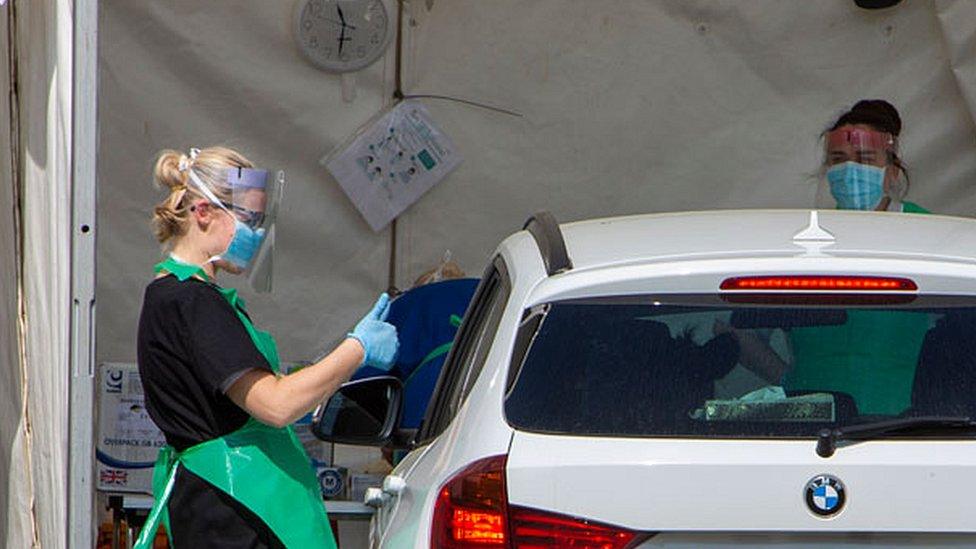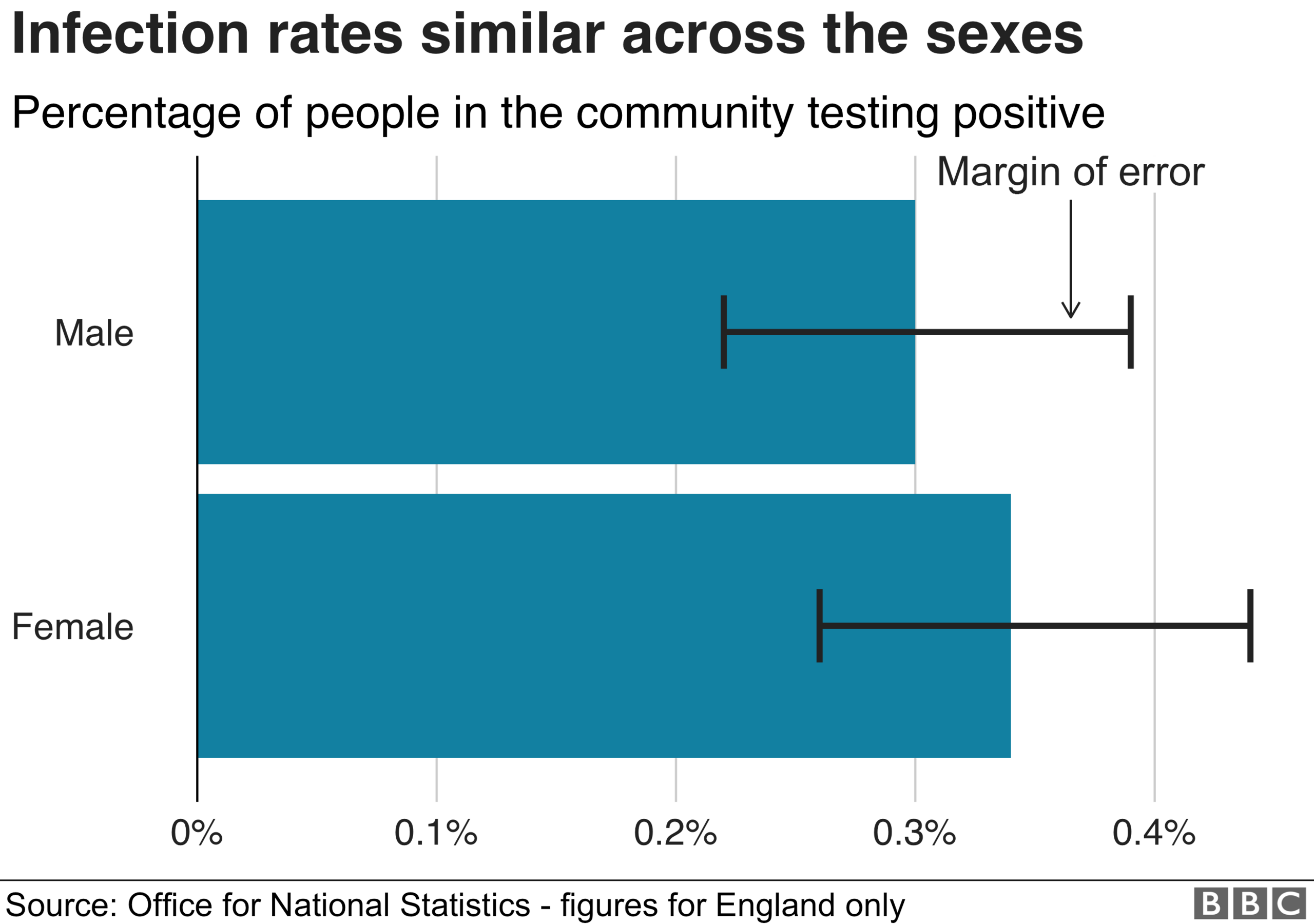Coronavirus: Majority testing positive have no symptoms
- Published
- comments

Only 22% of people testing positive for coronavirus reported having symptoms on the day of their test, according to the Office for National Statistics, external.
This hammers home the role of people who aren't aware they're carrying the virus in spreading it onwards.
Health and social care staff appeared to be more likely to test positive.
This comes as deaths from all causes in the UK fell to below the average for the second week in a row.
Between the end of March and June, there were 59,000 more deaths than the five-year average.
Meanwhile, the UK government's daily figures, external released on Tuesday showed another 155 people have died after testing positive for the virus. This takes the total number of deaths to 44,391.
It comes after 16 new deaths were reported on Monday, but there are often reporting lags over the weekend.
ONS survey
While the ONS survey includes relatively small numbers of positive swab tests (120 infections in all) making it hard to make any strong conclusions about who is most likely to be infected, there are some patterns coming through in the data:
Those in people-facing health or social care roles, and working outside their homes in general, were more likely to have a positive test.
People from ethnic minority backgrounds were more likely to have a positive antibody test, suggesting a past infection.
White people were the least likely proportionally to test positive for antibodies.
There was also some evidence that people living in larger households were more likely to test positive than those in smaller households.
Although men are more likely to die from coronavirus than women, this study did not find a difference in how likely they were to contract the infection.

The figures are based on tests of people selected at random in homes in England - people living in care homes or other institutions are not included in this study.
Some people testing positive without symptoms might go on to develop symptoms, or they may have already had symptoms and cleared them.
Asymptomatic spread
On Monday, the prime minister talked about how asymptomatic spread may have contributed to coronavirus cases in care homes.
His comments provoked anger in the care home sector when he suggested, "too many care homes didn't really follow the procedures".
Later his Business Secretary Alok Sharma said he'd meant that "nobody at the time knew what the correct procedures were", because of a lack of understanding of levels of asymptomatic transmission at the start of the outbreak.
Asymptomatic transmission was warned of by the World Health Organization and the government's scientific advisors, but they weren't able to quantify how great a risk it was.

What do I need to know about the coronavirus?
EASY STEPS: What can I do?
CONTAINMENT: What it means to self-isolate
LOOK-UP TOOL: Check cases in your area
MAPS AND CHARTS: Visual guide to the outbreak
VIDEO: The 20-second hand wash

While 22% in the ONS study reported symptoms on the day, a larger group - a third (33%) of people testing positive for coronavirus - reported having symptoms either on the day of their test or at their previous or subsequent test.
So the 78% not reporting symptoms on the day of the test includes "pre-symptomatic" people as well as "asymptomatic"- those who will never develop noticeable symptoms.
Meanwhile, weekly deaths in the UK, external are slightly below average for this time of year with 10,267 registered in the week of 26 June, and lower than the week before, figures show.
There were 651 deaths registered mentioning Covid-19 which remains above the number registered the week lockdown was announced (607).
- Published3 May 2022
